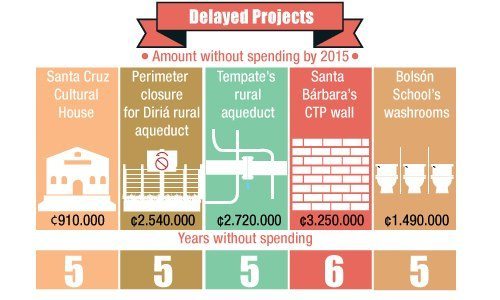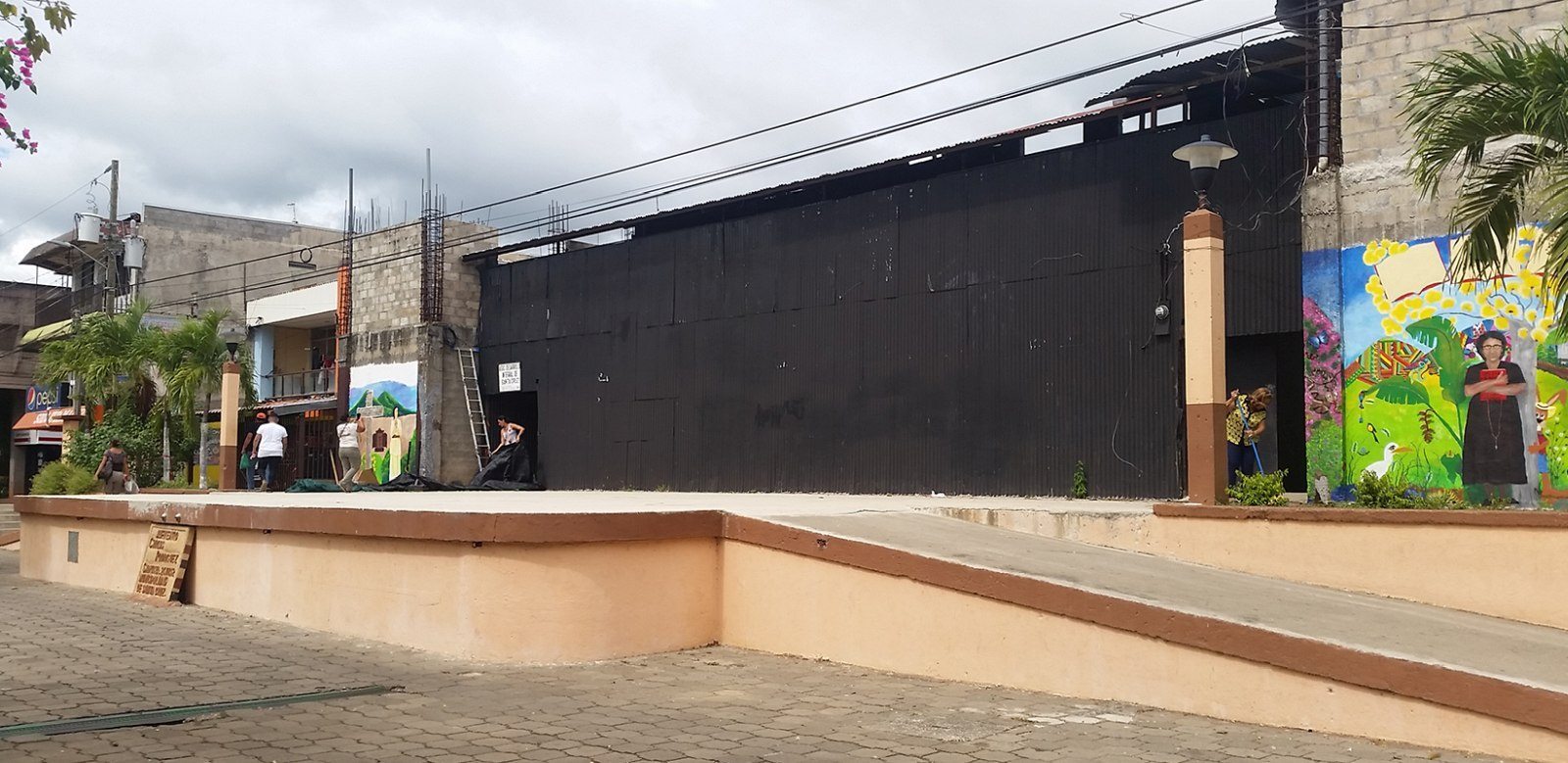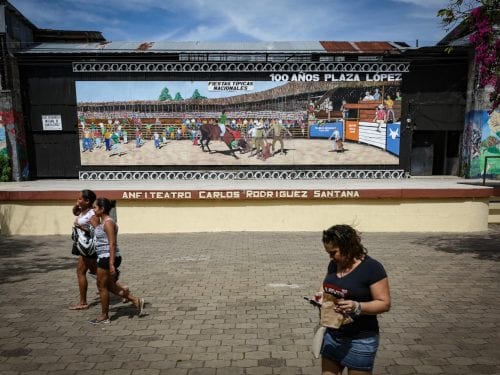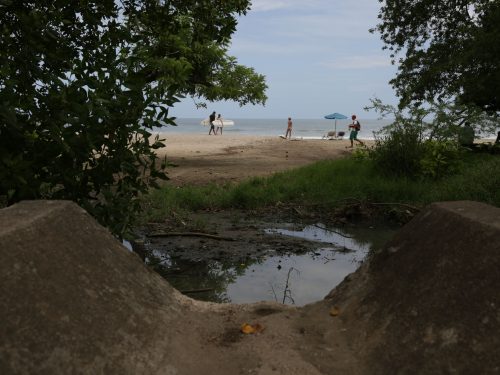
Behind the stage at Santa Cruz’s Bernabela Ramos Park, a few black cans cover the foundation of a building that should have been converted by now into the canton’s cultural center.
In a hall filled with construction debris, a few girls rehearse a dance routine with their instructor. Meanwhile, the funds to finish the project sit unused in a centralized government account operated by the Finance Ministry and in other municipal accounts.
So what happened? In 2011, the Public Security Ministry allocated ¢60 million to the Municipality of Santa Cruz for the project’s construction. The municipality invested part of that allocation, but 80 percent of it hasn’t been spent. Some ¢48.8 million remain unused, plus another ¢910,000 from a community-specific budget item allocated for the same project via the 2010 national budget law.

The construction project has stalled because the land it is on is registered to the Cantonal Cultural Association, an entity that is not authorized to spend public funds. It can’t receive those funds or use them to carry out the project.
Association president Luis Fernando Sánchez said the association declined to transfer the property’s ownership to the municipality in order to use the funds, because its members didn’t trust the previous municipal administration. Now a special session will be held to make a new decision.
The Voice of Guanacaste has uncovered dozens of similar stories after reviewing community-specific line items from six annual budgets of the previous municipal administration, from 2010 to 2015. These items entail funds that are directly allocated by lawmakers specifically for community projects.
During the previous municipal administration, some ¢79.3 million of these funds went unspent over a period of at least three years. And communities are left without their most important projects: fences for football fields, renovations to community halls, restroom facilities for schools and a long list of others.

Poor Planning
How is it possible that funds that are so important aren’t spent? As in the case of the cultural center, many of the projects in Santa Cruz ground to a halt between 2010 and 2015 because they were poorly designed from the start or they failed to meet minimum requirements for funds to be executed.
According to municipal code, district councils are tasked with sending community projects to the municipal councils. Council members review the projects and pass them on to the Legislative Assembly to be included in the national budget each year.
By the time they’re approved, the year for which the funds were budgeted is nearly over, so the under-execution of community-specific items usually exceeds 60 percent every year. That’s a common occurrence in all municipalities, according to municipal budget specialist Carlos Morales.
After a budget is allocated, its execution is left to a particular community. The municipality cannot issue the funds until all the requirements are met, and that’s where the problems start.
“These institutions must first comply with certain norms, and if they don’t, that money cannot be issued,” Morales said.
The Santa Cruz Municipality auditor, financial director and director of planning all agree with this explanation.
“Often the problems are born at the same time the project is born,” planning director William Huertas said. “There are no deeds, there are no blueprints, so you have to start there. … And the funds stop there.”
The problem is that once allocated, these funds can’t be modified for other uses unless specified by another law.
“The only entity with the ability to modify (the use of community funds) is the Legislative Assembly,” municipal financial director Mario Moreira said.
Leftover funds from some projects can be reutilized for purchasing fuel and maintaining roads, Moreira said. But that doesn’t apply to projects that have executed none of their budgets.
The Communities Lose
One consequence for municipalities that fail to execute community-specific budget items is a bad evaluation by the Comptroller General’s Office and a subsequent poor ranking among local governments.
But it’s the communities that really lose. One case that exemplifies this is the Bolsón school, which has carried over ¢1.5 million since 2012 from funds allocated for the construction of restroom facilities.
Although the basic structure was built, some ceramic finishing and ceiling construction is unfinished.
Community trustee Karolina Fonseca blames municipal officials for the problem.
“We go every year, submit the paperwork the municipality requests and nothing happens. Finally this year, with the new administration, they called all of the community trustees to a meeting and told us that in January they would start to buy the materials for the projects,” Fonseca said.
The solution now proposed by officials tasked with ensuring budgets are implemented as earmarked is to train trustees on how to present community investment plans by being aware of past mistakes.
Said Huertas: “Democracy is fomented at the base, in the district councils. If we’re gong to allow them to take a protagonist role, we’ve got to follow the process from the auditor’s office.”







Comments